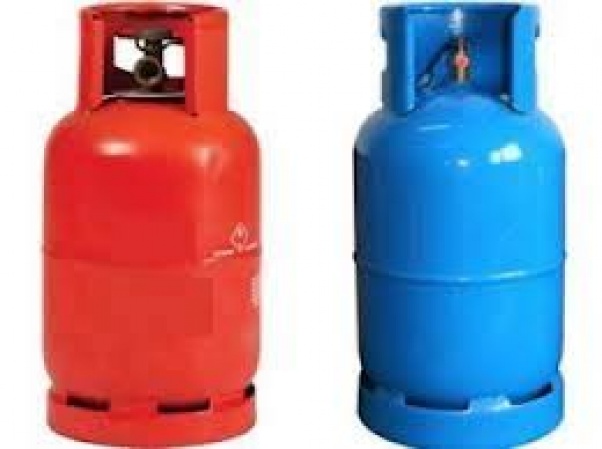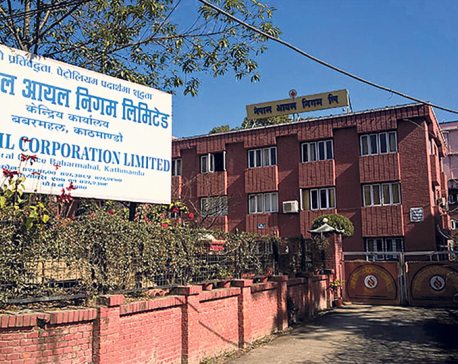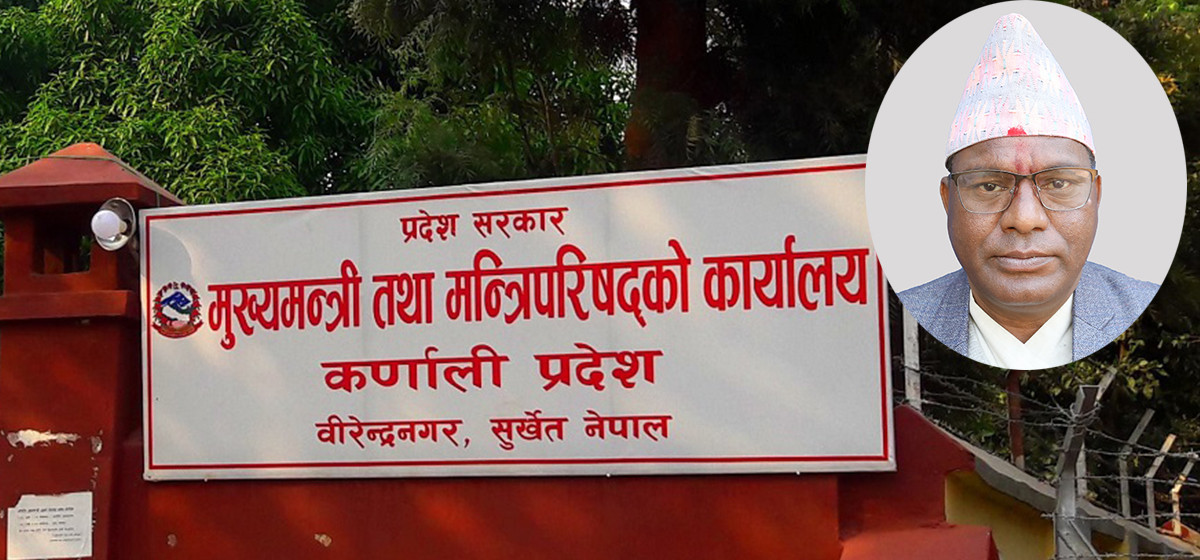
OR
NOC's color-coded LPG cylinders in quandary
Published On: July 18, 2019 04:00 AM NPT By: Muna Sunuwar | @TheMunaSun

KATHMANDU, July 18: The Nepal Oil Corporation's (NOC) plans to distribute color-coded liquefied petroleum gas (LPG) cylinders in the market has apparently failed as it has seen discontinuation for the second time.
The color-coded cylinders (red for household and blue for commercial use) were introduced by the NOC in 2013 when the state-owned fuel monopoly was making losses. The plan was revived in 2018 as the NOC was still making losses. "The industrial sector was consuming LPG at a cheaper price," a NOC official told Republica asking anonymity as he was not authorized to talk to the media. "So we had introduced the color-code, aiming to price differently for households and commercial users."
The NOC wanted to provide subsidy to students and lower income population on LPG--the common cooking gas. But in lack of proper monitoring mechanism, the risk of leakage was high.
"Without a proper monitoring system, there was a risk of artificial shortage of LPG in the market," the official said.
The cylinders contained the same amount of LPG but were different in price and color. The government had issued a notice in the gazette about its implementation.
With the increasing demand of petroleum products in the country, the NOC had planned to sell LPG cylinders to commercial users without having to bear losses. But the corporation's mechanism was not effective enough to implement it properly.
Most of the LPG companies had started complying with the government plan by distributing blue colored cylinders to hotels and restaurants. "We rolled out blue colored gas cylinders in the market, but there has been no follow up thereafter," a marketing manager of a Kathmandu-based LPG company said, on condition of anonymity. The NOC had directed LPG companies to produce 6% of the cylinders in blue color.
Experts say the regulation of the color-coded cylinders is challenging, and only the countries having integrated smart technologies have effectively implemented it. Data is an important part of the system, and without proper system to keep track, the NOC is not able to operate it.
"With LPG traders in every nook and corner of the country, monitoring is not possible with the existing human resource of the NOC," the NOC official said.
"Color-code should not be the sole tool for such measure," he said. "It could be more manageable if cylinders were weighed differently: 14.2 kg for households, 19 kg for commercial use, and 50 kg or more for industrial use."
The automatic pricing mechanism for LPG allows the NOC to make changes in the price of each cylinder by Rs 25, but this is not practiced due to fear of public protests.
The estimated loss for LPG is Rs 23.12 per cylinder. The NOC was bearing losses for three consecutive years, but the situation improved in Fiscal Year 2018/19. “The loss from LPG was covered by profit margins from the sale of petrol and diesel,” the official stated.
The total circulation of LPG cylinders stands at 11,180,767 as of January 2019.
You May Like This

Fuel prices fall as cross-border pipeline comes into operation
KATHMANDU, Sept 11: Nepal Oil Corporation (NOC) has reduced the price of some petroleum products by Rs 2 per liter. ... Read More...

Price of petroleum products to remain intact
KATHMANDU, March 14: The Nepal Oil Corporation has said there has been no change in the pricing of petroleum products,... Read More...

Smugglers’ go-downs near customs office
SIRAHA, March 16: On March 10, a team from the District Police Office (DPO), Siraha, arrested a truck with an... Read More...








Just In
- Qatar Emir meets PM Dahal, bilateral agreement and MoUs signed between Nepal and Qatar
- Employee involved in distribution of fake license transferred to CIAA!
- Youth found dead in a hotel in Janakpur
- CM Kandel to expand cabinet in Karnali province, Pariyar from Maoist Center to become minister without portfolio
- Storm likely to occur in Terai, weather to remain clear in remaining regions
- Prez Paudel solicits Qatar’s investment in Nepal’s water resources, agriculture and tourism sectors
- Fire destroys 700 hectares forest area in Myagdi
- Three youths awarded 'Creators Champions'



_20240423174443.jpg)







Leave A Comment